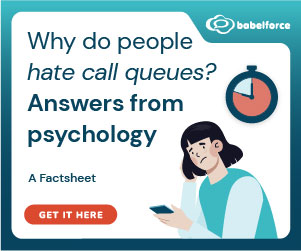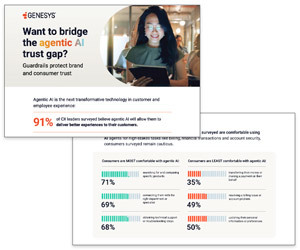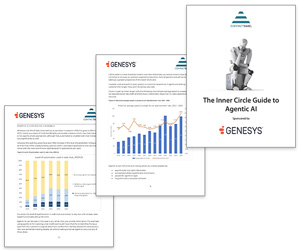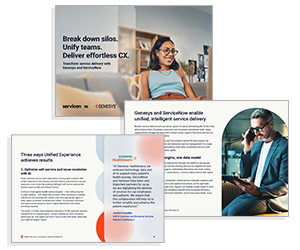We discuss several ways of reducing both hold times and call transfer rates in the contact centre, while improving overall call quality.
What Is Hold Time?
Hold time is the time during which a customer is put on hold so that the advisor can find additional information or pass the contact through to a colleague.
Hold time is the time during which a customer is put on hold so that the advisor can find additional information or pass the contact through to a colleague.
Too often, hold time is confused with queue time, which is instead the time a customer has to wait before they speak to an advisor.
So, they are two separate metrics, and you can reduce queue time by optimizing your staffing calculations. However, when it comes to hold time, there are lots of options.
The Two Fundamentals to Reducing Hold Time
There are two reasons why advisors put customers on hold. The first is because they have to complete a lot of back-end processes and the second is because the advisor doesn’t have the required knowledge.
Let’s look at these in isolation. To reduce hold time for when advisors are completing back-end processes, we need to consider:
- Can we train advisors to explain what they are doing to the caller, to keep them on the line and to help build rapport?
- What improvements can we make to the advisor desktop to speed up the process?
- Can we automate any of the back-end processes using robotic process automation (RPA)?
Then, we need to look at reducing hold time through boosting advisor knowledge. To find out where we can improve in this area, we can start by asking ourselves:
- Do we always ensure that there is enough time for training in our weekly plans?
- Do we have a plan for regularly reviewing and updating our knowledge base?
- Have we made development plans for individual advisors?
Once we’ve asked ourselves these questions, we can devise our own methods for lowering hold time or look at some more creative methods for doing so, just like those presented below.
Dissect Your Hold Time Metric
Once we’ve explored these first two options, we can start to reduce overall hold time by looking at the spread of hold times across different contact reasons and different advisors.
If we can identify calls with long hold times, we can listen back through them and start to spot trends in what leads to the call being placed on hold.
Let’s start with contact reasons. If we can identify calls with long hold times, we can listen back through them and start to spot trends in what leads to the call being placed on hold. Through this, we can find out which sort of queries are most likely to include time on hold and why.
Then, we can make other changes to systems and processes to make it easier for advisors to handle the queries, or we could let this research guide our training plans.
To guide such training plans it is good to learn how our highest performing advisors have negotiated the query in question, so we can share this as “best practice”. This leads on to our next point…
Discover What Your “Low Hold Time” Advisors Are Doing Well
First things first, we want to figure out who our best performers are, and we can do this through quartile analysis.
Quartile analysis enables us to understand the spread of any metric throughout our contact centre team and split the advisor population into four groups.
Quartile analysis enables us to understand the spread of any metric throughout our contact centre team and split the advisor population into four groups.
As hold time is our focus here, we will split advisors into these four quartiles in accordance with their individual average hold time – using the figures available within your ACD system.
In this, Q1 will include the 25% of advisors with the lowest hold time, Q2 will have the 25-50%, Q3 50-75% and Q4 will be made up of the 25% of advisors with the longest average hold time.
By doing this, we will likely find a much greater spread of hold times than we would have otherwise imagined and we can start thinking about identifying the positive behaviours that we see in Q1 and cascading them through the other quartiles.
However, we need to consider customer satisfaction, so only replicate the behaviours of advisors in Q1 who also achieve consistently high CSat results.
For more on using quartile analysis to lower handling times, read our article: How to Safely Knock 20 Seconds off Your Average Handling Time (AHT)
Find Ways to Lower Attrition
When you look at the advisors who have the longest hold times, what you will likely find is that many are new starters who have not yet reached “full competence”.
Typically, it can take between 6 and 25 weeks after training for an advisor to reach their full potential, so if you have high advisor attrition rates, hold times will naturally be higher.

If we focus on lowering attrition rates, we can also positively influence hold times and potentially create better experiences.
If we focus on lowering attrition rates, we can also positively influence hold times and potentially create better experiences.
But how can we do this?
Well, for starters, we could try these five quick tips:
- Assess occupancy rates to protect advisors from burnout
- Talk to advisors after they hand in their notice to find out why they’re leaving
- Be careful when recruiting advisors who have left previous jobs after just a few months
- Start a buddy system to better support new advisors
- Find ways of providing job variation
While implementing any one of these options would be a good start, in the long term, stopping attrition comes down to creating a positive culture, with happy people who want to help customers to their best ability.
The end game after all is to have advisors sharing advice with one another, to build a positive attitude to learning, so that advisors will, over time, still be with us and have less need to put customers on hold.
To find out how to create a culture like this, read our article: Create and Maintain a Positive Culture
Improve Knowledge Management
On the topic of having advisors better supporting one another, having a good knowledge management strategy will enable advisors to access good information quickly. This may remove the need to put the caller on hold altogether.
So it’s good for us to continually review and update our knowledge base, but there are also a number of good knowledge management techniques that we can apply.
For example, we should be developing a consistent style guide, to make knowledge articles easy to read and apply, as well as pinpointing poor knowledge so we can replace it or remove it altogether.
However, when it comes down to knowledge management, there are a number of other techniques that we can apply, depending on the tools that are available to us.

David Rowlands
As David Rowlands, the Director of Customer Success at 8×8, says: “Within any knowledge base you will have a basic search function, authorship tools and an ability to give knowledge ratings.”
“However, a knowledge base with an intelligent search, knowledge suggestions and knowledge leaderboards will make it much easier for the team to find content and reduce hold time.”
If the knowledge base is easier to navigate, advisors may not need to put the customer on hold, but can instead just inform the customer what they are doing.
By telling customers what we are doing, we are keeping them informed and we can also use the time to engage in small talk, to help build rapport.
For more on knowledge bases, read our article: An Introduction to Call Centre Knowledge Base Software
Provide Advisors With All the Information They Need Up Front
If we can give advisors all the information that we have about the customer up front, it saves us quite some time retrieving that from the customer or through other sources.
We can do this through implementing screen-pop technology, which will likely save more time in terms of advisor conversation, but it can also reduce the likelihood that the contact gets transferred.
Why? Because we have easy access to the customer’s history and we can assess which solutions have and haven’t worked before, which means that we can be more confident about the decisions that we make. This means that we are less likely to require the assistance of a colleague.
However, if we want to make the best of our screen-pop technology, we need to link together our disparate systems and create an omnichannel strategy.
While this may not be the most exciting prospect, if we want to minimize handling times, we want the best information to be available to our advisors and this is stored within different systems.

Mike Murphy
Mike Murphy, a Senior Account Executive at Genesys, adds: “With an omnichannel solution, employees have all the channels that they need in one place. This allows all context and knowledge to be provided in a timely way.”
“With this, we have a simplified system for advisors to work with in which collaboration is embedded and simplified, improving efficiency and potentially lowering handling times.”
Rethink Your Call Routing Strategy
Passing the customer through to the advisor who is most appropriate for them and their projected query type will lead to a more fluid conversation.
One common method for this is to route the customer back to the last advisor they spoke to, which we can do quite simply if we have an ACD system with the capability of recognizing caller IDs. This is most effective when the contact comes only a few days after the original call.
We can also employ other routing strategies in the hope of reducing hold time. One such strategy involves data-directed routing to route customers to the most appropriate advisor, based on the status of their account.
If a customer with an overdue account were to call into the contact centre, that would be flagged up in the initial ID process and be routed to a specialist advisor.
As an example of how to use data-directed routing, if a customer with an overdue account were to call into the contact centre, that would be flagged up in the initial ID process and be routed to a specialist advisor. In this instance, the advisor would specialize in payment collection.
It is perhaps due to these new strategies that fewer contact centres are multiskilling advisors, as we found in our 2017 report “What Contact Centres Are Doing Right Now – How Do You Compare?”
In this report, we found that the percentage of contact centres that multiskilled advisors had dropped from 90.5% in 2015 to 80.4% in 2017.
This drop maybe because productivity can suffer if advisors are switching from one task to another; not only this, if advisors are handling contacts in areas in which they are specialists, talk and hold time will likely fall.
If you don’t multiskill advisors, however, and advisors are handling the same contact types, it is especially good to follow the advice in the following article: 29 Ways to Boost Contact Centre Morale
How Can You Improve the Hold Experience?
While the advice in this article is all designed to reduce hold time, to improve efficiency and satisfaction, we can also achieve the latter by making the experience less “painful” for the customer.
For example, many contact centres are guilty of repeating the same on-hold message to the customer while they wait. This can cause frustration, so it is advisable to look at the average hold time and ensure we have enough messages to cover it.
Perhaps even worse than a repeated message is if your on-hold message includes a repeated apology for the wait. This is because the more you repeat an apology, the less authentic it becomes. We should set the expectation for how long the wait will be and only apologize if we go past that.
To improve the on-hold experience we should include a variety of messages, scattered between hold music.
So, to improve the on-hold experience we should include a variety of messages, scattered between hold music. However, we need to be careful with music too, as your choice will not appeal to everyone.
We found this out on a site visit to one contact centre that trialled a Coldplay song, only for advisors to receive a large number complaints and for the trial to come to a swift conclusion.
One way to pick a song or jingle that will receive a better reception than in the example above could be to give customers a selection of music to choose from.
For more tips like this, read our article: What Customers Really Think of Music on Hold
In Summary
Hold time is the total amount of time that the advisor put the customer on hold during their interaction. Reducing this time will likely lead to improved customer satisfaction and lower operational costs.
However, we put customers on hold for a reason, usually to gather more information or to transfer the contact to a more knowledgeable advisor, so we need to be smart in how we can reduce hold time.
Maybe we can create routing strategies to connect the customer with the more knowledgeable advisor in the first instance. Or we could review and update the knowledge base to give advisors all the information they need up front.
But there are also non-technological solutions for you to consider, such as listening to call recordings of your highest performing advisors – according to low hold times and high CSat scores – and sharing best practices.
There are lots of options to choose from. Just be careful to monitor CSat when making any such changes, as you want to ensure that your strategy is not in any way harming the overall customer experience.
For more articles on increasing your contact centre’s operational efficiency, read our articles:
- How to Calculate Productivity in the Contact Centre
- 12 Top Tips for Intraday Management in the Contact Centre
- Stop Blindly Obsessing Over Efficiency
Author: Robyn Coppell
Reviewed by: Megan Jones
Published On: 7th Aug 2019 - Last modified: 4th Sep 2025
Read more about - Call Centre Management, 8x8, Average Handling Time (AHT), Call Handling, David Rowlands, Editor's Picks, Genesys, Hold-Music, Management Strategies





















